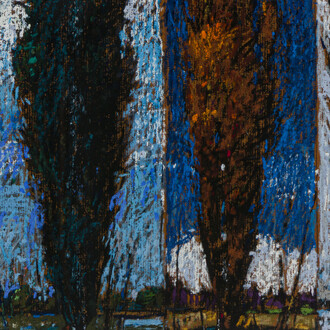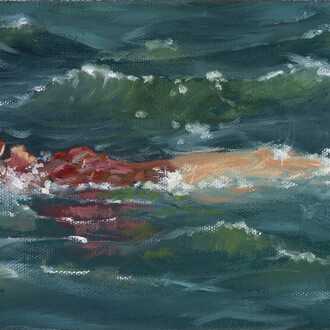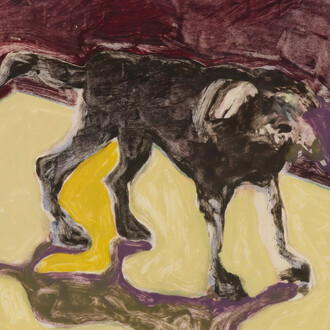John Nieto (1936-2018) is a leading figure in the history of American contemporary art, renowned for his paintings of Southwestern, Indigenous, and contemporary subjects conveyed through his distinctive style of expressive color and bold strokes.
His passion for bright colors developed as a young man and evolved throughout his career. Nieto developed his own unique palette, which is celebrated in all of the paintings included in Images of Ancestry, on display July 21 through August 22, 2023.
Inspired by both his own heritage, a mix of Spanish and Native American (Mescalero Apache and Navajo), and his deep study of the history and culture throughout the Southwest, he painted a wide range of richly modulated images of Indigenous warriors, fancy dancers, chieftains, potters, weavers, and other craftspeople, as well as portraits of contemporary and historical icons.
Essayist Michael Abatemarco writes, “When an artist devotes their life to painting subjects tied to a distinctive world view and a cultural presence on the landscape, they evoke its mysteries, its depths, as well as indicating by their devotion a profound love for them. Nieto was among a generation of Native artists who rose to prominence in the 1960s through the 1980s and merged modern and contemporary aesthetics with Indigenous subject matter. But, as he turned to a world he knew for inspiration, he encountered one that opened him to new modes of expression and, he strove to synch them.”
Nieto’s work was exhibited across the United States and in Europe, Japan, Latin America, and Africa. In 1994, he received New Mexico's Governor's Award for achievement in the Arts, the state’s highest honor for a living artist. He received Southern Methodist University’s Distinguished Alumni Award in 2006. A major monograph entitled John Nieto: Forces of Color & Spirit, written by Susan Hallsten McGarry, was published in 2009. Nieto was the subject of a 72-minut documentary film, John Nieto: An American Spirit Walk,” written and directed by one of his sons, Anaya Nieto, and released in 2021. Today, Nieto’s work is represented in prominent museum and private collections across the country.















